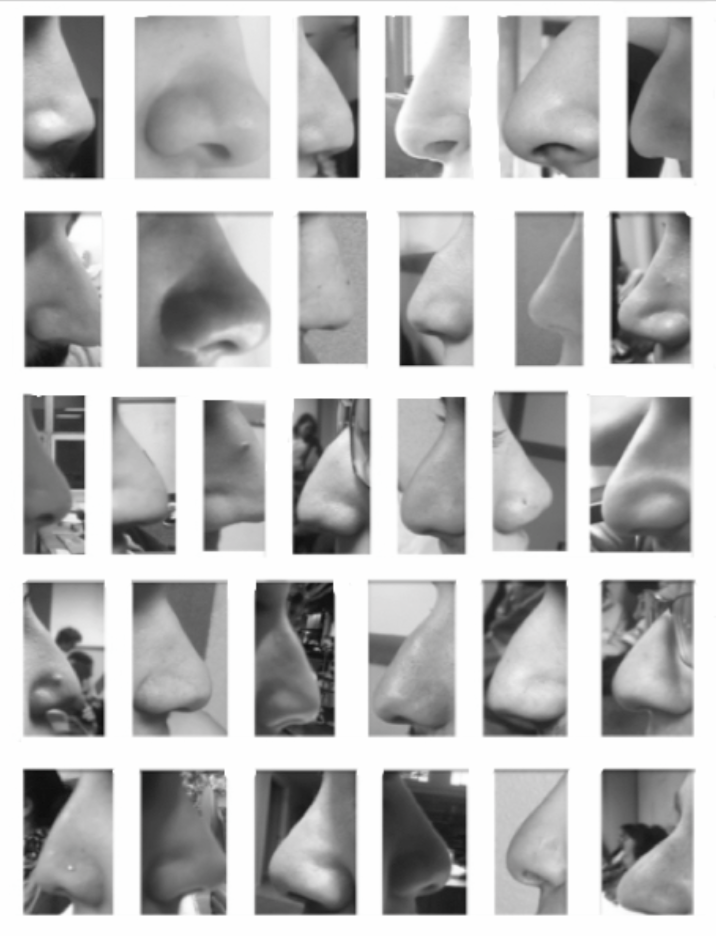Think you can recognize a Jew at a single glance? I doubt it.
Many believe they can distinguish a Jew solely by his or her appearance. In reality, the type of Jew classified in such cases is just one particular type in which only a small fraction belongs among a plethora of others. One of the most prominent features of this type of Jew is what has since been commonly referred to as the “Jewish nose.”
The “Jewish nose,” characterized by its large size and hooked tip, is thus a genetic myth. Some anthropologists, such as Paul Topinard, have even indexed the “Jewish” or “Semitic” nose into a particular category for being prominent, arched and hooked. Yet, the origins of such a stereotype are curious, since there is no universal truth about Jewish noses. The diaspora scattered Jews across the globe and this mix of Jewish ancestry causes a Jew’s nose to generally vary from population to population. In fact, statistics show that only a minority of Jews have hooked noses, with the predominant Jewish nose being straight.
The hooked nose is actually more characteristic of a Roman nose, which post-Enlightenment Western scientists and writers even considered to be a sign of beauty, nobility and power. In Plutarch’s Life of Anatomy, Mark Antony’s aquiline nose is a feature of his esteemed nobility and comparable to that of Hercules. This type of nose is even common among Europeans, especially Slavs, and Middle Easterners, in general to this day. And yet, the description of a Jew’s physical features rarely fails to include a protruding hooked nose.
A distinctive Jewish nose first came into play in the second half the twelfth century when Christian artists began to portray the suffering and death of Jesus Christ in art. In these paintings, Jews were illustrated with their heads turned away from Christ’s suffering, and the inclusion of a large, distinctive nose would emphasize the direction of their gaze. It wasn’t until the late 13th century, however, that there was a more consolidated representation of a Jew in art.
During the Holocaust, Hitler had high ambitions to formulate and sustain a biologically superior race — the “Aryan” race. Contending that Jews had an inferior genetic makeup, the Nazis went as far as creating a racial science that consisted of measuring skull sizes and nose lengths, and recording eye and hair color. In addition to having features like blonde hair and blue eyes, a smooth and straight nose was characteristic of being a true Aryan. Such a conviction allowed the Nazis to use a Jewish nose as a propaganda tool in an effort to demonize and dehumanize the Jews.
As if wearing a yellow Star of David was not enough, Jews were ostracized and set apart from others by their appearance. Haunting caricatures of Jews were passed out as fliers, spread across newspapers and books, and hung on storefront window displays. Der Stürmer, a weekly Nazi newspaper founded by Nazi propagandist Julius Streicher in 1923, was especially potent in obscene caricatures and anti-Semitic libel. The caricatures were straightforward and repetitive to the point where they floated through the subconscious minds of many, almost creating a new reality. Jews were seen as less than human and unnatural, and they were illustrated with the picture of a devil in mind.
At the onset of the anti-Semitism associated with the Holocaust, Jewish students were victimized and ridiculed as their teachers pointed out their noses among their other “non-Aryan” characteristics. In Streicher’s children’s book Der Giftpilz from 1938, a student tells his teacher: “One can most easily tell a Jew by his nose. The Jewish nose is bent at its point. It looks like the number six.” Finding faults in physical appearance served as an easy means of discriminating against Jews that would lead to other malicious attacks on their character.
Unfortunately, such caricatures are still being produced recently, more prevalently to depict Jewish leaders like Netanyahu. A 2013 cartoon by the British Sunday Times, for instance, sparked controversy as it portrayed Netanyahu with a protruding nose, building a wall with the bodies of Palestinians. The cartoon was deemed wholly anti-Semitic and the Sunday Times apologized for their grotesque cartoon.
The attempt by various Jew-haters throughout history to associate such noses with ugliness and filth has infiltrated the minds of many. Society has gone so far as normalizing the overabundance of anti-Semitic jokes regarding a Jew’s nose, and The Racial Slur Database even compares a Jewish nose to that of Pinocchio, or even a mosquito. As if present-day Jews don’t face enough boundaries, why not add facial features into the mix?
With the already unattainable standards of beauty projected by our society, the insecurities and stigma accompanying the stereotypical “Jewish nose” are astronomical. The “Jewish nose” fails to adhere to the Western ideals of beauty and immense pressure to conform has led many Jews to undergo plastic surgery. The term has found its way into the vocabulary of many surgeons as a physical deformity, as if it is some kind of medical condition that needs to be treated. The nose job has come to be as customary for a Jewish girl as her bat-mitzvah, and Jacques Joseph of Berlin, the father of the modern nose job, was even a Jew himself.
Although this topic proves uncomfortable and sensitive for some, confronting and discussing these issues, rather than ignoring them, can help dispel negative misconceptions and tackle prejudice head on. Eventually, we might be able to change the socially constructed perception of a Jew.

